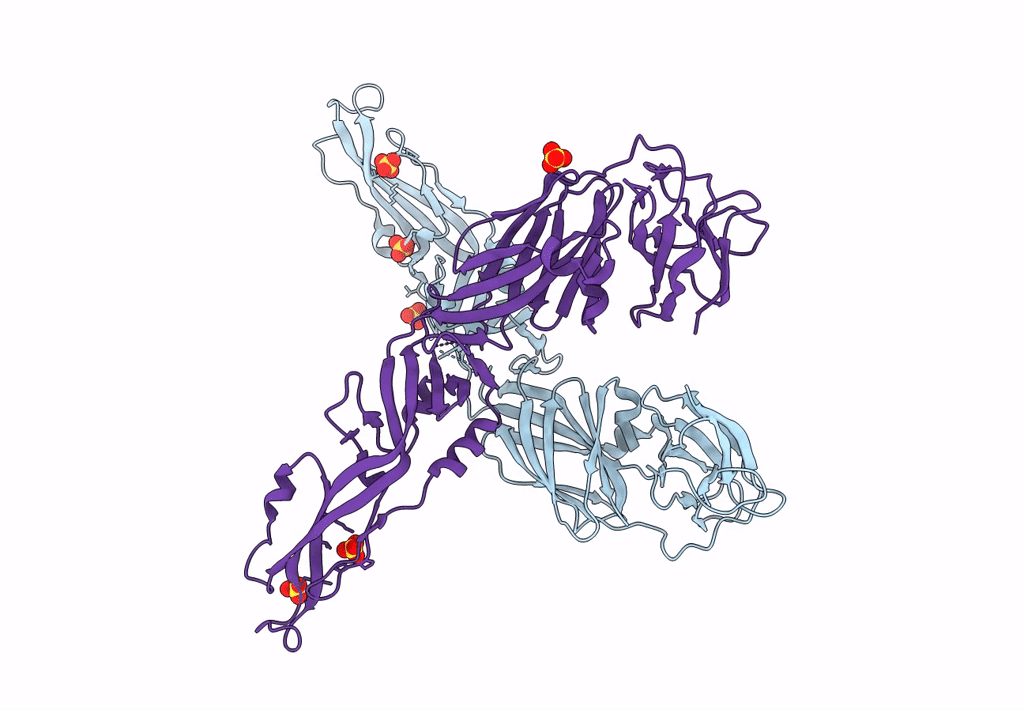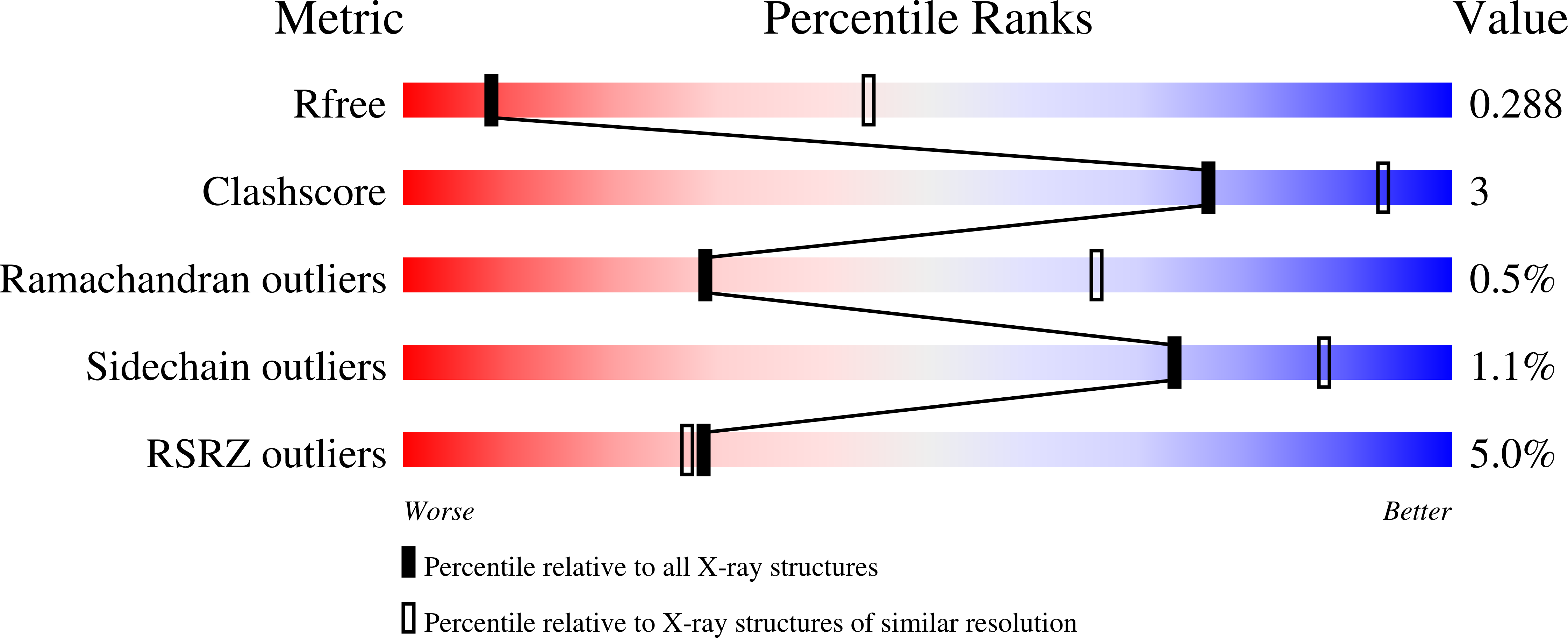
Deposition Date
2023-03-16
Release Date
2023-08-09
Last Version Date
2024-10-16
Entry Detail
PDB ID:
8OFN
Keywords:
Title:
Structure of the yellow fever virus (Asibi strain) dimeric envelope protein
Biological Source:
Source Organism:
Yellow fever virus (Taxon ID: 11089)
Host Organism:
Method Details:
Experimental Method:
Resolution:
3.48 Å
R-Value Free:
0.27
R-Value Work:
0.25
R-Value Observed:
0.25
Space Group:
P 43 21 2


